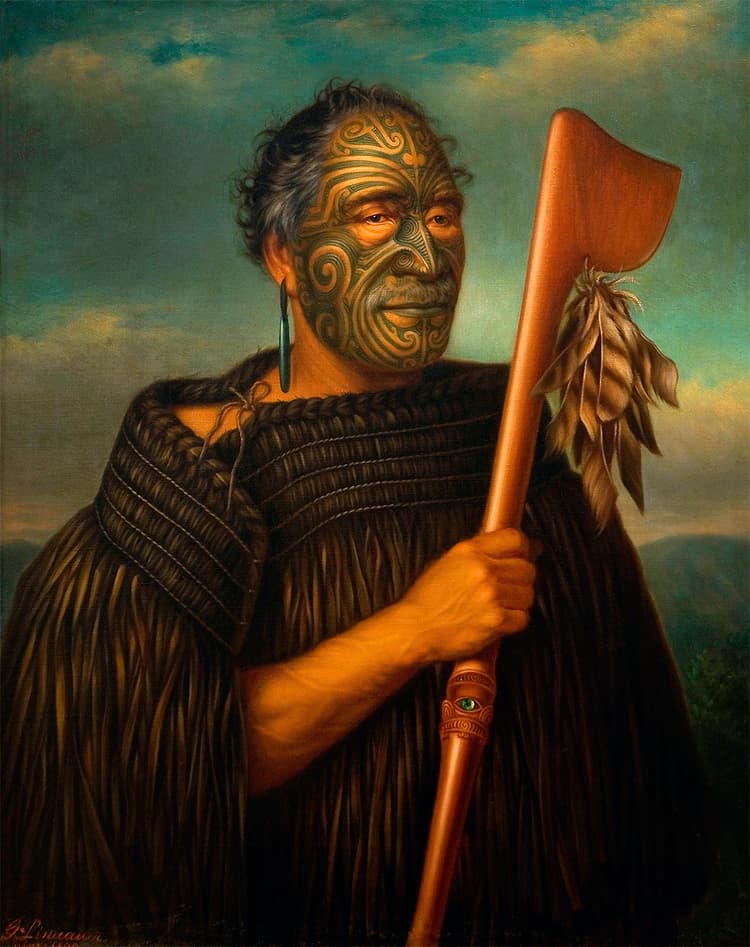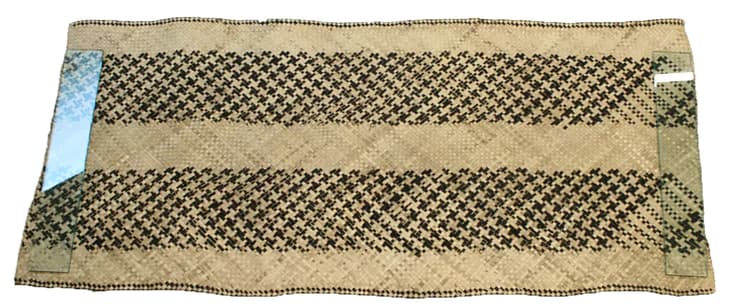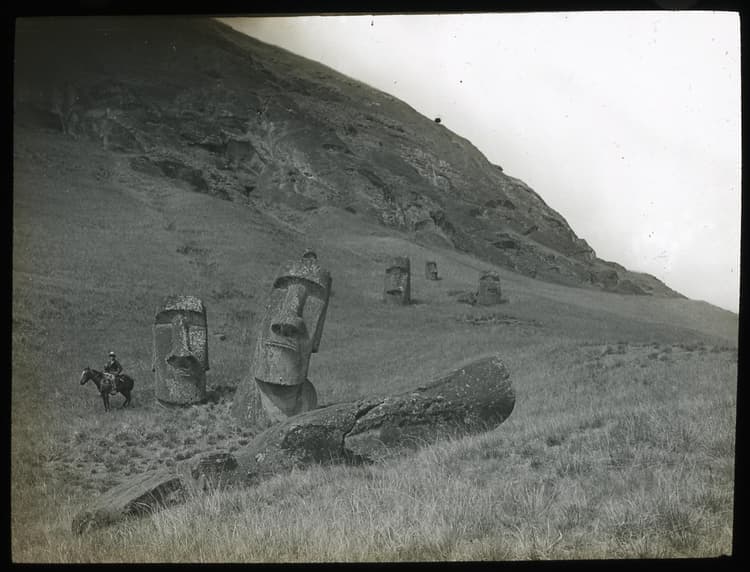Unit 9 Required Works
Daniel Miller
11 min read
Listen to this study note
Study Guide Overview
This study guide covers Art of the Pacific from Polynesia, Micronesia, and Melanesia, focusing on the diverse cultures, materials (wood, feathers, shells, fibers), functions (ritual, ceremonial, social), and ancestral connections in art. Specific artworks are detailed, including Ahu 'ula, Moai, Malagan masks, and tapa. Key themes include power, spirituality, cultural exchange, navigation, and ancestral veneration, connecting to other units like Global Prehistory and Early Europe. The guide also provides practice questions and exam tips covering multiple-choice, short answer, and free-response formats.
#AP Art History: Unit 9 - Global Contemporary: The Pacific 🌏
Hey there, future art historian! Let's get you prepped for Unit 9. This is your ultimate guide, designed to make everything click, even the night before the exam. We'll cover the key artworks, connect the dots, and get you feeling confident. Let's dive in!
#9.1: Art of the Pacific 🗿
#Key Concepts
- Diverse Cultures: The Pacific region includes Polynesia, Micronesia, and Melanesia, each with unique artistic traditions.
Remember: Polynesia, Micronesia, Melanesia - PMM like a radio station!
- Materials: Artists use local materials like wood, feathers, shells, and fibers.
Think of the environment influencing the art!
- Function: Art often serves ritual, ceremonial, and social purposes.
It's not just about aesthetics; it's about meaning and purpose!
- Ancestral Connections: Many works honor ancestors and deities.
Keep an eye out for ancestor worship!
#Required Works
- Ahu 'ula (Feather Cape)
- Female Deity
- Hiapo (tapa)
- Staff god
- Buk (mask)
- Tamati Waka Nene
- Navigation chart
- Presentation of Fijian mats and tapa cloths to Queen Elizabeth II
- Nan Madol
- Moai on platform (ahu)
- Malagan display and mask
Practice Question
Multiple Choice Questions
-
Which of the following materials is MOST commonly used in the creation of traditional Pacific Island art? (A) Marble (B) Bronze (C) Wood (D) Concrete
-
What is the primary function of the Ahu 'ula (feather cape) in Hawaiian culture? (A) Everyday wear (B) Symbol of power and prestige (C) Burial shroud (D) Religious offering
Short Answer Question
Briefly explain the significance of the use of local materials in Pacific Island art. Provide one example from the required works to support your answer.
Free Response Question
Analyze how cultural exchange is represented in the "Presentation of Fijian mats and tapa cloths to Queen Elizabeth II." How does this artwork reflect the interaction between different cultures? Use specific details from the image and your knowledge of Pacific Island art to support your response.
Scoring Breakdown for FRQ
- Thesis (1 point): A clear, defensible thesis statement that addresses the prompt.
- Analysis of Cultural Exchange (2 points): Discussion of the significance of the exchange of mats and tapa cloths, and how it reflects the interaction between Fijian and British cultures. Specific details from the image and knowledge of Pacific Island art should be included.
- Supporting Evidence (2 points): Use of specific details from the image, such as the type of textiles, the setting, and the individuals involved to support the analysis.
- Contextualization (1 point): Explanation of the historical and cultural context of the exchange, such as the role of the British monarchy in the Pacific and the importance of traditional textiles in Fijian culture.
#9.2: Artworks in Detail 🔍
#Ahu 'ula (Feather Cape)

- What: A Hawaiian feather cape worn by royalty (ali'i).
Think: Royal feathers = Royal power!
- Materials: Feathers of the mamo bird, olona fiber.
- Significance: Symbol of power, prestige, and divine protection.
Remember this for the exam!
- Visual: Often vibrant colors, intricate patterns, and varying lengths.
#Female Deity

- What: A wooden figure from Nukuoro, Micronesia.
- Significance: Represents a female deity, often associated with fertility and abundance.
Think: Female figure = Fertility and blessings!
- Visual: Simple, abstract form with smooth surfaces.
#Hiapo (tapa)

- What: A decorated bark cloth from Niue.
- Materials: Bark of the wauke tree.
- Significance: Used for art, ceremonies, and rituals.
Think: More than just cloth; it's a spiritual canvas!
- Visual: Geometric patterns, plants, and animals.
#Staff god

- What: A religious artifact from the Cook Islands.
- Significance: Represents a deity or spirit, used in rituals.
Think: Staff god = spiritual power!
- Visual: Carved wood, adorned with feathers and shells.
#Buk (mask)

- What: A mask from the Torres Strait Islands.
- Materials: Turtle shell, wood, feathers, and shells.
- Significance: Used in dances, ceremonies, and storytelling.
Remember: Masks are often used in rituals and performances!
- Visual: Intricate designs, often with animal and cultural motifs.
#Tamati Waka Nene

- Who: A Maori warrior and chief from New Zealand.
- Significance: Depicted as a strong leader, reflecting interactions between Maori and Europeans.
Think: Portrait = Power and Legacy!
- Visual: Often shown with symbols of his rank and status.
#Navigation chart

- What: A navigational tool from the Marshall Islands.
- Materials: Wood and shells.
- Significance: Used to navigate the Pacific Ocean, reflecting local knowledge and cosmology.
Remember: Navigation charts are more than maps; they are cultural records!
- Visual: Abstract patterns and symbols.
#Presentation of Fijian mats and tapa cloths to Queen Elizabeth II


- What: A cultural exchange between Fijian people and the British royal family.
- Significance: Showcases Fijian cultural practices and establishes a connection between cultures.
Think: Cultural exchange = connection and diplomacy!
- Visual: Traditional woven textiles presented to the Queen.
#Nan Madol

- What: A ruined city built on artificial islands in Micronesia.
- Significance: An impressive example of engineering and construction in the Pacific Islands.
Remember: Nan Madol = Engineering marvel!
- Visual: Basalt rock structures.
#Moai on platform (ahu)

- What: Large stone statues on Easter Island (Rapa Nui).
- Significance: Represent ancestors of the Rapa Nui people.
Think: Moai = Ancestral guardians!
- Visual: Carved from volcanic rock.
#Malagan display and mask

- What: Funeral ceremony and art form from New Ireland, Papua New Guinea.
- Significance: Honors the deceased and ancestors.
Remember: Malagan = honoring ancestors and the deceased!
- Visual: Intricately carved masks, sculptures, and other objects.
Practice Question
Multiple Choice Questions
-
The Buk mask from the Torres Strait Islands is primarily made of: (A) Gold (B) Bronze (C) Turtle shell (D) Clay
-
What is the main purpose of the navigation charts used by Pacific Island peoples? (A) Decoration (B) Religious rituals (C) Navigation (D) Trade
Short Answer Question
How does the depiction of Tamati Waka Nene reflect the interactions between Maori and European cultures in New Zealand?
Free Response Question
Compare and contrast the use of materials and the cultural significance of two of the following artworks: Ahu 'ula (feather cape), Hiapo (tapa), and Buk (mask). How do these artworks reflect the unique cultural traditions of their respective regions? Use specific details from the images and your knowledge of Pacific Island art to support your response.
Scoring Breakdown for FRQ
- Thesis (1 point): A clear, defensible thesis statement that compares and contrasts the use of materials and cultural significance of two selected artworks.
- Comparison and Contrast (2 points): Discussion of the similarities and differences in the materials used and the cultural significance of the two selected artworks. Specific details from the images should be included.
- Supporting Evidence (2 points): Use of specific details from the images, such as the type of materials, the patterns, and the purpose of the artworks to support the analysis.
- Contextualization (1 point): Explanation of the cultural context of each artwork, including the unique traditions of their respective regions.
#9.3: Making Connections 🔗
#Themes and Concepts
- Power and Authority: Ahu 'ula and Tamati Waka Nene demonstrate how art can represent power and status.
Think: Powerful People Portrayed in Pacific Art
- Spirituality and Ritual: Staff gods, Buk masks, and Malagan displays highlight the importance of spiritual beliefs and rituals.
Think: Spiritual Symbols in Sacred Spaces
- Cultural Exchange: The presentation of Fijian mats and tapa cloths shows interactions between different cultures.
Think: Cultural Connections Created through Crafts
- Navigation and Exploration: Navigation charts demonstrate the ingenuity and knowledge of Pacific Island peoples.
Think: Navigation Needs New Notes
- Ancestral veneration: Moai and Malagan displays highlight the importance of honoring ancestors.
Think: Ancestors Always Adored in Art
#Connections Across Units
- Unit 1 (Global Prehistory): Compare the use of natural materials in cave paintings with those in Pacific Island art.
Look for similarities in how materials are sourced and used in different cultures.
- Unit 3 (Early Europe and Colonial Americas): Consider how colonial encounters impacted indigenous art in both the Americas and the Pacific.
Focus on the impact of colonization on art and cultural practices.
- Unit 8 (Global Contemporary): Connect the themes of identity and cultural heritage in Pacific Island art to contemporary art movements.
Think about how artists today are influenced by their cultural heritage.
Practice Question
Multiple Choice Questions
-
Which of the following artworks best demonstrates the theme of cultural exchange? (A) Ahu 'ula (feather cape) (B) Navigation chart (C) Presentation of Fijian mats and tapa cloths to Queen Elizabeth II (D) Moai on platform (ahu)
-
How does the use of natural materials in Pacific Island art relate to the environment? (A) It is a coincidence. (B) It is a way of exploiting the environment. (C) It reflects the resources available in the region. (D) It is a way to disrespect the environment.
Short Answer Question
Explain how the concept of ancestral veneration is represented in either the Moai on platform (ahu) or the Malagan display and mask. How does this reflect the cultural beliefs of the people who created these works?
Free Response Question
Analyze how the themes of power and spirituality are represented in two artworks from Unit 9. How do these artworks reflect the cultural values and beliefs of their creators? Use specific details from the images and your knowledge of Pacific Island art to support your response.
Scoring Breakdown for FRQ
- Thesis (1 point): A clear, defensible thesis statement that analyzes how the themes of power and spirituality are represented in two selected artworks.
- Analysis of Themes (2 points): Discussion of how power and spirituality are depicted in the chosen artworks. Specific details from the images should be included.
- Supporting Evidence (2 points): Use of specific details from the images, such as the materials, symbols, and figures depicted to support the analysis.
- Contextualization (1 point): Explanation of the cultural values and beliefs that are reflected in the chosen artworks.
#Final Exam Focus 🎯
#High-Value Topics
-
Function of Art: Pay close attention to the ritual and ceremonial purposes of Pacific Island art. This is a recurring theme!
-
Materials and Techniques: Understand how local materials influence artistic choices.
Materiality is key! -
Cultural Context: Be prepared to discuss the cultural significance of each artwork. Context matters!
-
Connections: Look for ways to connect Pacific Island art to other units. Interdisciplinary thinking is crucial!
#Common Question Types
- Multiple Choice: Focus on identifying materials, functions, and cultural contexts.
Read carefully and eliminate wrong answers first.
- Short Answer: Be concise and directly address the prompt.
Use specific examples from the artworks.
- Free Response: Develop a clear thesis, provide specific evidence, and contextualize your arguments.
Practice writing FRQs under timed conditions.
#Last-Minute Tips
- Time Management: Don't spend too long on any one question.
Pace yourself and move on if you're stuck.
- Common Pitfalls: Avoid vague statements; use specific details.
Don't just describe; analyze!
- Stay Calm: You've got this! Take deep breaths and trust your preparation.
Confidence is key!
Good luck, you amazing art historian! You're going to rock this exam! ✨
Continue your learning journey

How are we doing?
Give us your feedback and let us know how we can improve





